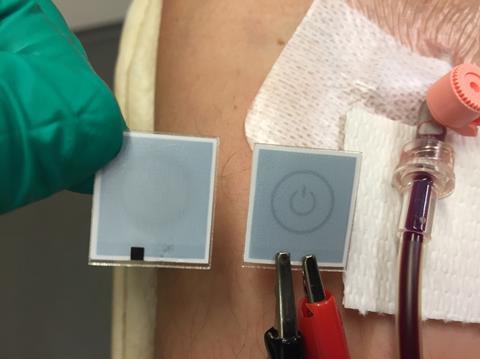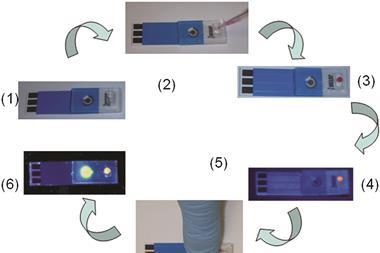Fuel cell that fits inside human vein generates power from blood flow

Scientists have designed a tiny fuel cell that generates electricity from the human body’s blood flow. And, for the first time, they have tested the device in a person.
Phones, tablets and other portable electronics are common, but development of equally portable power sources is lagging behind. This is a particular concern for biomedical devices such as pacemakers. Since the 1960s, researchers have made biocompatible fuel cells that generate power inside the body. However, none of these power sources has been successfully demonstrated in a human subject.
Now, Sergey Shleev and his team at Malmö University, Sweden, have done just that: They connected an artificial vein containing a miniaturised fuel cell to a team member’s arm vein and powered a low voltage display with the electricity generated from the blood flow.
The fuel consists of graphite electrodes, one coated with cellobiose dehydrogenase and the other with bilirubin oxidase. These enzymes generate power via redox reactions, using the glucose and oxygen in blood.
Pasquale D’Angelo an expert in bioelectronics at the National Research Council, Italy, comments: ‘The good stability as much as the certified efficiency of devices generating electrical power in a human blood stream, as described in this work, and operating under homeostatic conditions, allows technological and practical limitations of implanted batteries and cumbersome wireless-controlled power supply systems to be overcome.’
Shleev acknowledges that at 0.74µW the fuel cell’s power output is still very small. ‘Long-term investigations of tubular fuel cells including biocompatibility tests and optimisation studies are required in order to increase power output,’ he says. His team is working on a charge-storing design that could provide higher power outputs.
References
This article is free to access until 19 September 2016
D Pankratov et al, RSC Adv., 2016, DOI: 10.1039/C6RA17122B












No comments yet